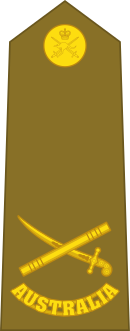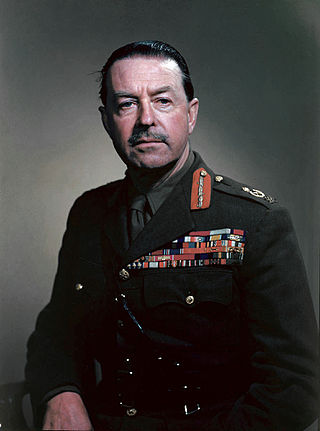
Field marshal is the most senior military rank, ordinarily senior to the general officer ranks. Usually, it is the highest rank in an army, and as such, few persons are appointed to it. It is considered as a five-star rank (OF-10) in modern-day armed forces in many countries. Promotion to the rank of field marshal in many countries historically required extraordinary military achievement by a general. However, the rank has also been used as a divisional command rank and also as a brigade command rank. Examples of the different uses of the rank include Afghanistan, Austria-Hungary, Pakistan, Prussia/Germany, India and Sri Lanka for an extraordinary achievement; Spain and Mexico for a divisional command ; and France, Portugal and Brazil for a brigade command.
Brigadier is a military rank, the seniority of which depends on the country. In some countries, it is a senior rank above colonel, equivalent to a brigadier general or commodore, typically commanding a brigade of several thousand soldiers. In other countries, it is a non-commissioned rank.
Brigadier general or brigade general is a military rank used in many countries. The rank is usually above a colonel, and below a major general or divisional general. When appointed to a field command, a brigadier general is typically in command of a brigade consisting of around 4,000 troops.
This is a table of the ranks and insignia of the Canadian Armed Forces. As the Canadian Armed Forces is officially bilingual, the French language ranks are presented following the English.
Officer Cadet is a rank held by military cadets during their training to become commissioned officers. In the United Kingdom, the rank is also used by members of University Royal Naval Units, University Officer Training Corps and University Air Squadron; however, these are not trainee officers with many not choosing a career in the armed forces.
Listed in the table below are the insignia—emblems of authority—of the British Army. Badges for field officers were introduced in 1810 and the insignia was moved to the epaulettes in 1880. On ceremonial or parade uniforms these ranks continue to be worn on the epaulettes, either as cloth slides or as metal clips, although on the modern 'working dress' they are usually worn as a cloth slide on the chest. Although these insignia apply across the British Army there is variation in the precise design and colours used and it can take some time to become familiar with them all.
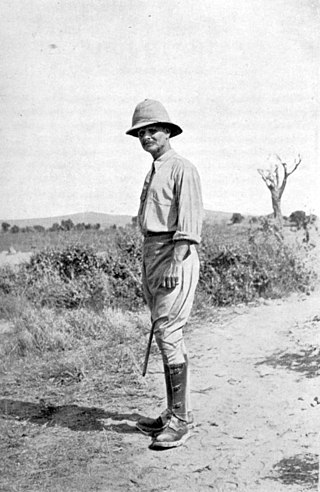
Field marshal is the highest rank of the Australian Army and was created as a direct equivalent of the British military rank of field marshal. It is a five-star rank, equivalent to the ranks in the other armed services of Admiral of the Fleet in the Royal Australian Navy, and Marshal of the Royal Australian Air Force. The subordinate army rank is general.
The Military ranks of Finland are the military insignia used by the Finnish Defence Forces. The ranks incorporates features from Swedish, German, and Russian armed forces. In addition, the system has some typically Finnish characteristics that are mostly due to the personnel structure of the Finnish Defence Forces. The ranks have official names in Finnish and Swedish languages and official English translations. The Swedish forms are used in all Swedish-languages communications in Finland, e.g. in Swedish-speaking units of Finnish Defence Force. The system of ranks in the Swedish Armed Forces is slightly different.
The Indian Army, the land component of the Indian Armed Forces, follows a certain hierarchy of rank designations and insignia derived from the erstwhile British Indian Army (BIA).
General is the highest rank achievable by serving officers of the British Army. The rank can also be held by Royal Marines officers in tri-service posts, for example, Generals Sir Gordon Messenger and Gwyn Jenkins, former and current Vice-Chief of the Defence Staff. It ranks above lieutenant-general and, in the Army, is subordinate to the rank of field marshal, which is now only awarded as an honorary rank. The rank of general has a NATO-code of OF-9, and is a four-star rank. It is equivalent to a full admiral in the Royal Navy or an air chief marshal in the Royal Air Force.
Before Unification as the Canadian Armed Forces in 1968, the Canadian military had three distinct services: the Royal Canadian Navy, the Royal Canadian Air Force, and the Canadian Army. All three services had a Regular (full-time) component and a reserve (part-time) component. The rank structure for these services were based on the services of the British military, the Royal Navy, the Royal Air Force, and the British Army. The change to a "Canadian" rank structure meant that many of the traditional (British) rank titles and insignia were removed or changed.
Lieutenant-general is a Canadian Forces rank used by commissioned officers of the Canadian Army or Royal Canadian Air Force. Vice-admiral is the equivalent rank in the Royal Canadian Navy.
The rank structure of the Royal Australian Air Force (RAAF) has been inherited from the Royal Air Force (RAF). The RAF based its officer ranks on the Royal Navy, and its airmen ranks on the British Army.

These are the official Royal Navy Officer ranks ordered by rank. These ranks are part of the NATO/United Kingdom ranks, including modern and past. Past insignia is in italic.

Gorget patches are an insignia in the form of paired patches of cloth or metal on the collar of a uniform (gorget), used in the military and civil service in some countries. Collar tabs sign the military rank, the rank of civil service, the military unit, the office (department) or the branch of the armed forces and the arm of service.
General is the second-highest rank, and the highest active rank, of the Australian Army and was created as a direct equivalent of the British military rank of general; it is also considered a four-star rank.
Major general is a senior rank of the Australian Army, and was created as a direct equivalent of the British military rank of major general. It is the third-highest active rank of the Australian Army, and is considered to be equivalent to a two-star rank. A major general commands a division or the equivalent.
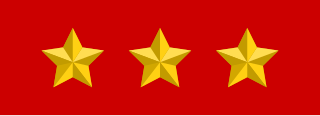
Lieutenant General is a senior rank in the Bangladesh Army. It is the second-highest active rank of the Bangladesh Army and was created as a direct equivalent of the British military rank of lieutenant general. It is also considered a 3 star rank. Till 2007 it was the highest rank in the Bangladesh Armed Forces as all chiefs of army staff held this rank and navy and air chiefs were of two-star ranks.

Major General is a senior rank in the Sri Lanka Army, and was created as a direct equivalent of the British military rank of major general. It is the second-highest active rank of the Sri Lanka Army while the Lieutenant General is the highest, and is considered to be equivalent to a two-star rank. A major general commands a division or the equivalent or performs staff duties in army headquarters.
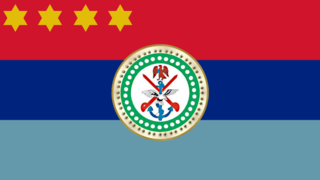
General is the highest rank achievable by serving officers of the Nigerian Army. It ranks above lieutenant-general and is subordinate to the rank of field marshal, which is only awarded as an honorary rank to the incumbent president of Nigeria in his capacity as the commander-in-chief of the Armed Forces of Nigeria. The rank of general has a NATO-code of OF-9, and is a four-star rank. It is equivalent to a full admiral in the Nigerian Navy or an air chief marshal in the Nigerian Air Force.






